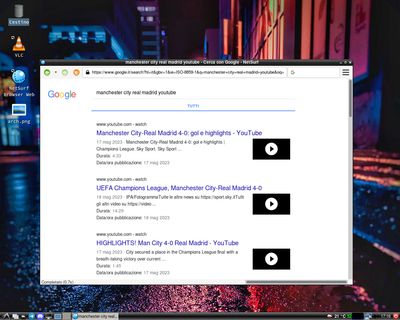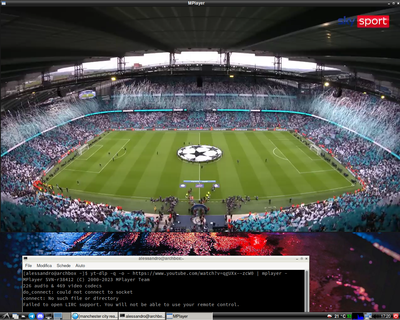tauro wrote on 2024-02-10, 15:47:
It will need a very basic UI, icewm maybe. And most useful programs such as LibreOffice would probably need some heavy tweaking to run at acceptable speeds, if they can run at all with that little amount of ram.
TWM is also an option. It's so old it's not being bloated yet.
It's also professional looking (like CDE or Motif), not a cheap KDE clone.
Personally, I can't express how much I have an aversion against Linux Mint and other KDE/Windows wannabes.
I liked KDE v3, though. It tried to be as user-friendly as Windows XP, which for once was a good aim. It didn't try to mimic Windows 95 GUI, like others did.
Even Breadbox Ensemble switched from Motif to using Windows 95 style (as a default), which I didn't see as an improvement but a step backwards.
tauro wrote on 2024-02-10, 15:47:
Ram is going to be the main constraint.
Always was. *nix OSes in general are all memory hogs.
They want to consume all RAM first for themself, then reluctantly give it back on demand.
Unix originally was designed as an power user OS, made for mainframes, using a time-sharing and resource sharing model (multiple users).
An overkill memory expansion is about "okay" for Linux/*nix, thus.
A separate swap partition or even better, a separate swap HDD is strongly recommended.
The virtual memory is being used all the time, so if the HDD is very busy, the OS stalls.
As I wrote earlier, *nix is a memory hog, by design.
Linux, too, despite it being a POSIX style thing with a taste for obsolete hardware standards.
It rather gives the user some swap memory than physical RAM. It wants it all for itself.
Let's remember, everything is a file. The user too.
I remember, back in the 90s/early 2000s, Linux users still routinely looked for "good hardware" (non-USB, non-Plug&Play).
Which in practice meant 486 era hardware found on dumpsters (SCSI controllers, SCSI CD-ROM drives , non-WinModems, non-GDI Printers etc).
Edit: Linux also had a font problem, I think. The selection of fonts needed for wordprocessing was very limited.
By contrast, Windows 3.0 had Adobe TypeManager and scalable vector fonts since 1990/1991.
But anyway, the standard printer of the typical Linux user was TTY/text-only, anyway.
So it didn't matter. WYSIWYG was far away.
Edit: The swap partition thing was no joke.
If memory is low, installing a small, quick CF card or DOM on another IDE channel might be worth a thought.
On another IDE channel, because of simultaneous operation.
Two IDE devices on same channel can't talk same time.
While that's also true for parallel ISA bus in theory, the bus itself has a lower latency.
There are no microcontrollers involved that must make out who's in charge right now.
Edit: Ideally, the CD-ROM drive is on a "third channel" and thus not shard with the HDDs.
Since this is difficult to accomplish, an SCSI based solution might be worth a try.
The CD-ROM interface of an SB16 or PAS16 could be used, for example. It's slow, but fast enough for a CD-ROM drive.
If each device has its own channel, everyone's happy.
Edit: If memory serves, kernel 2.4 used to be the last Linux kernel to (fully) support legacy hardware (ISA stuff, mainly).
I remember this, because back in the 2000s people did recommend not to use kernel 2.6.
That was when XFree86 was still a common X11 display server.
"Time, it seems, doesn't flow. For some it's fast, for some it's slow.
In what to one race is no time at all, another race can rise and fall..." - The Minstrel
//My video channel//

